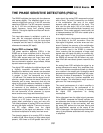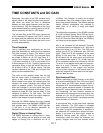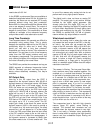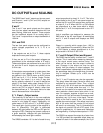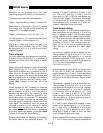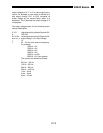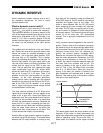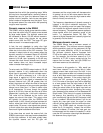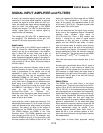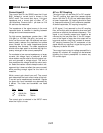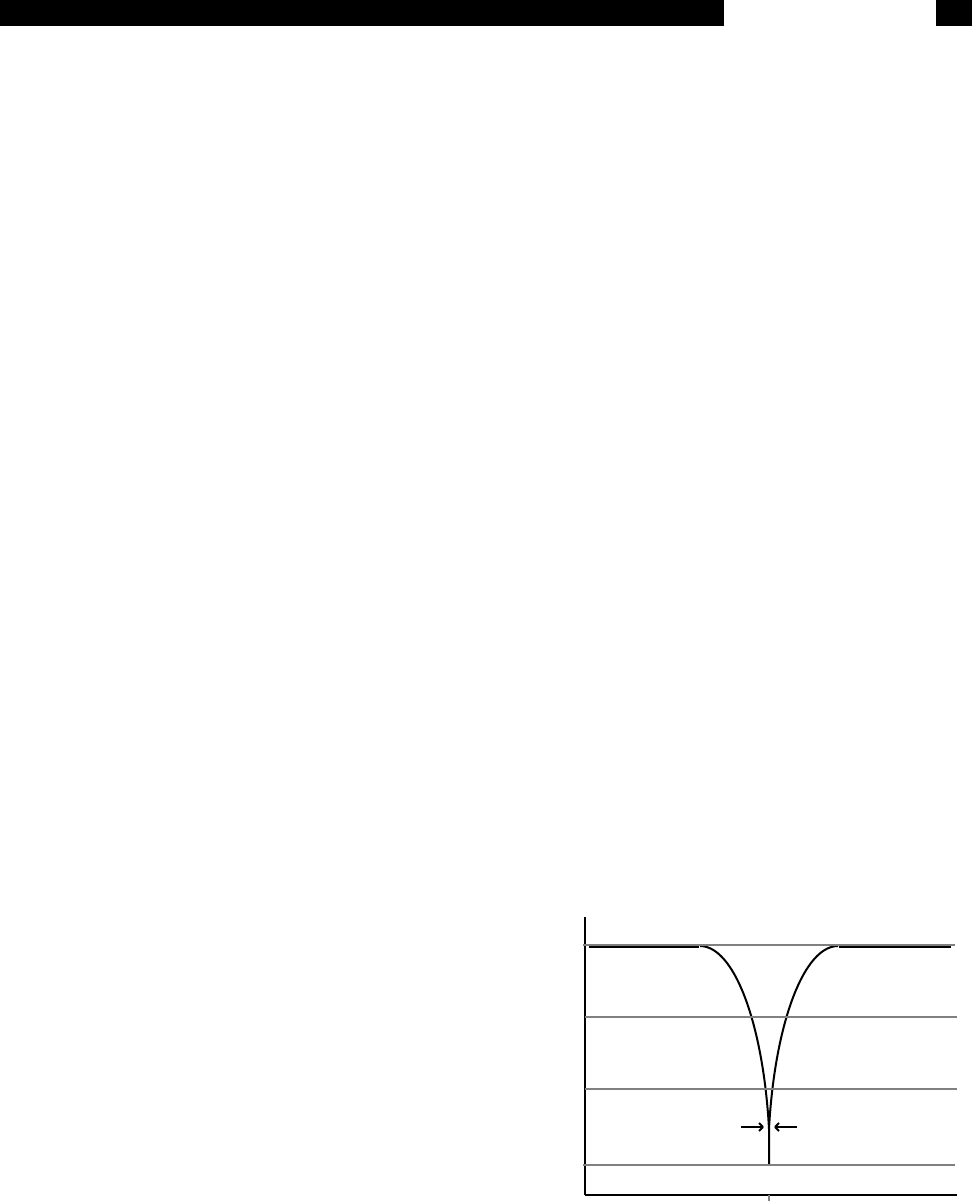
3-17
SR850 Basics
We've mentioned dynamic reserve quite a bit in
the preceding discussions. It's time to clarify
dynamic reserve a bit.
What is dynamic reserve really?
Suppose the lock-in input consists of a full scale
signal at f
ref
plus noise at some other frequency.
The traditional definition of dynamic reserve is the
ratio of the largest tolerable noise signal to the full
scale signal, expressed in dB. For example, if full
scale is 1 µV, then a dynamic reserve of 60 dB
means noise as large as 1 mV (60 dB greater than
full scale) can be tolerated at the input without
overload.
The problem with this definition is the word 'tolera-
ble'. Clearly the noise at the dynamic reserve limit
should not cause an overload anywhere in the
instrument - not in the input signal amplifier, PSD,
low pass filter or DC amplifier. This is accom-
plished by adjusting the distribution of the gain. To
achieve high reserve, the input signal gain is set
very low so the noise is not likely to overload. This
means that the signal at the PSD is also very
small. The low pass filter then removes the large
noise components from the PSD output which
allows the remaining DC component to be ampli-
fied (a lot) to reach 10 V full scale. There is no
problem running the input amplifier at low gain.
However, as we have discussed previously,
analog lock-ins have a problem with high reserve
because of the linearity of the PSD and the DC off-
sets of the PSD and DC amplifier. In an analog
lock-in, large noise signals almost always disturb
the measurement in some way.
The most common problem is a DC output error
caused by the noise signal. This can appear as an
offset or as a gain error. Since both effects are
dependent upon the noise amplitude and frequen-
cy, they can not be offset to zero in all cases and
will limit the measurement accuracy. Because the
errors are DC in nature, increasing the time con-
stant does not help. Most lock-ins define tolerable
noise as noise levels which do not affect the
output more than a few percent of full scale. This
is more severe than simply not overloading.
Another effect of high dynamic reserve is to gener-
ate noise and drift at the output. This comes about
because the DC output amplifier is running at very
high gain and low frequency noise and offset drift
at the PSD output or the DC amplifier input will be
amplified and appear large at the output. The
noise is more tolerable than the DC drift errors
since increasing the time constant will attenuate
the noise. The DC drift in an analog lock-in is usu-
ally on the order of 1000ppm/°C when using 60 dB
of dynamic reserve. This means that the zero point
moves 1% of full scale over 10°C temperature
change. This is generally considered the limit of
tolerable.
Lastly, dynamic reserve depends on the noise fre-
quency. Clearly noise at the reference frequency
will make its way to the output without attenuation.
So the dynamic reserve at f
ref
is 0dB. As the noise
frequency moves away from the reference fre-
quency, the dynamic reserve increases. Why?
Because the low pass filter after the PSD attenu-
ates the noise components. Remember, the PSD
outputs are at a frequency of |f
noise
-f
ref
|. The rate
at which the reserve increases depends upon the
low pass filter time constant and roll off. The
reserve increases at the rate at which the filter
rolls off. This is why 24 dB/oct filters are better
than 6 or 12 dB/oct filters. When the noise fre-
quency is far away, the reserve is limited by the
gain distribution and overload level of each gain
element. This reserve level is the dynamic reserve
referred to in the specifications.
The above graph shows the actual reserve vs the
frequency of the noise. In some instruments, the
signal input attenuates frequencies far outside the
lock-in's operating range (f
noise
>>100 kHz). In
these cases, the reserve can be higher at these
DYNAMIC RESERVE
f
ref
60 dB
40 dB
20 dB
0 dB
f
noise
actual reserve
low pass filter
bandwidth
60 dB specified reserve



